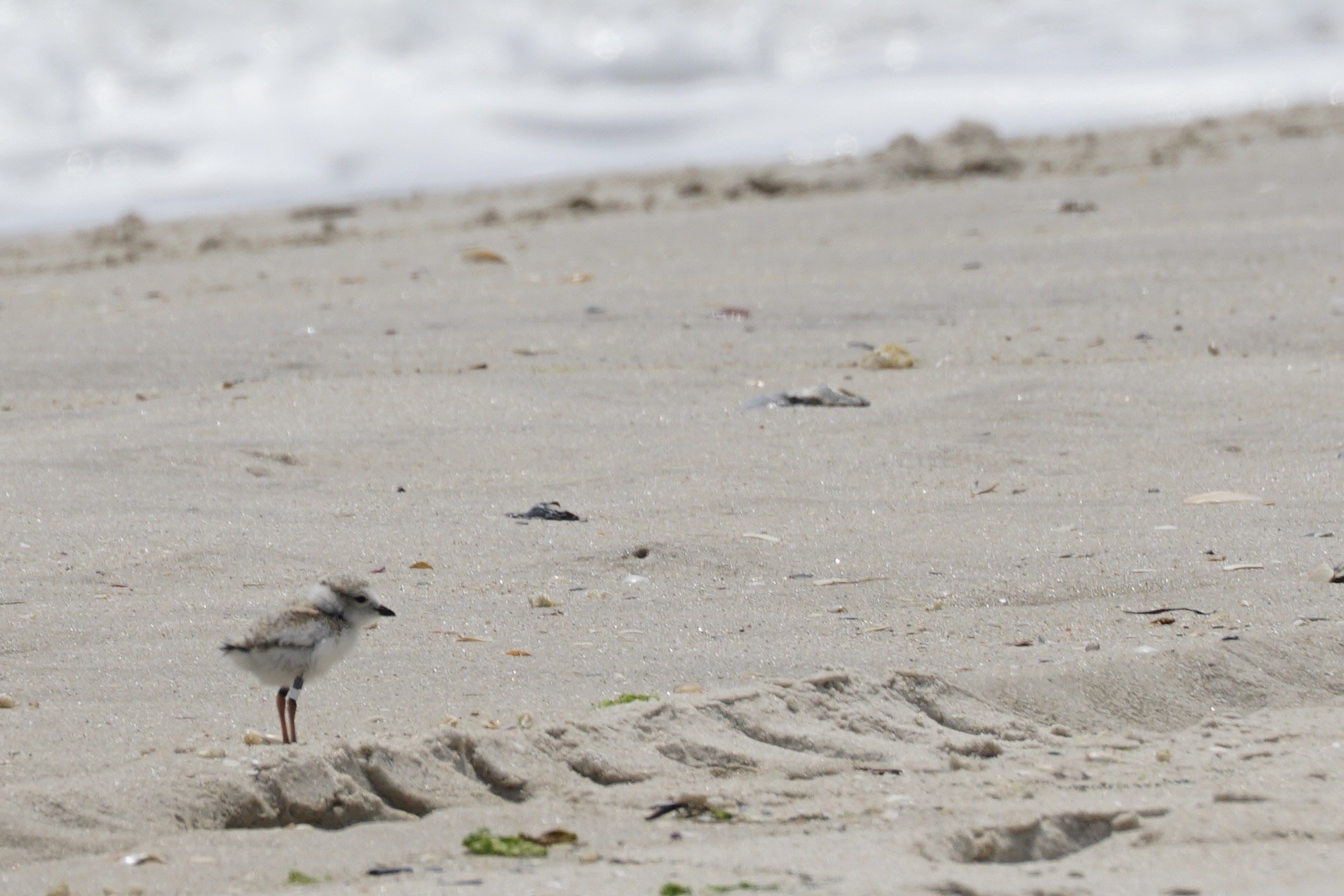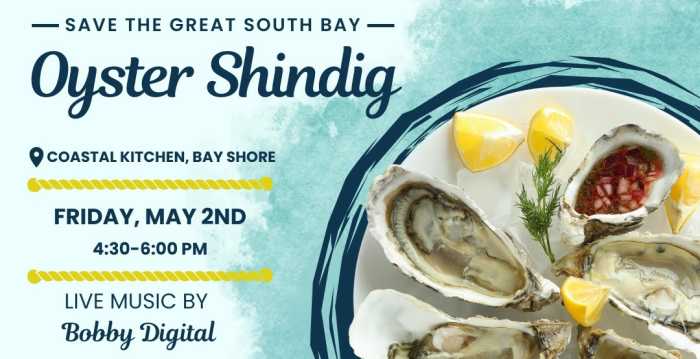
Photo by Skylar Epstein.
The number of piping plovers skittering across Fire Island’s dunes and beaches reached a new high in 2023 with 73 breeding pairs being recorded by the National Park Service within the boundaries of the national seashore. Fire Island’s population of the small endangered seabird species has grown significantly since 2015 when only three breeding pairs were recorded nesting within the seashore. (Both of these numbers exclude piping plovers nesting in Robert Moses State Park and Smith Point County Park.)
FINS Park Biologist Jordan Raphael celebrated the success of the endangered birds referring to the milestone as a “new record” and said “the growth has been exponential.” Raphael explained that the seashore saw record numbers of breeding pairs and fledged chicks every year since 2019 with increasing numbers year to year. The NPS does not yet have an estimate of fledged piping plover chicks for the 2023 breeding season but last year 64 breeding pairs helped 101 chicks fledge within the seashore. A new record of fledged plover chicks is expected this year.
Raphael pointed to several factors to explain the success of the plovers in recent years including a plague of mange reducing Fire Island’s red fox population and Hurricane Sandy creating more nesting habitat. Piping plovers are ground nesting birds that lay eggs in shallow nests dug out of flat lightly vegetated sand. Hurricane Sandy created more of this type of habitat on the beaches of Fire Island though it took the birds several years to start taking advantage of this new real estate. All of this is good news for a species that was listed as federally threatened under the Endangered Species Act in 1986 and listed as endangered in New York state.
Here on Fire Island piping plovers are known to many residents for the necessary but sometimes inconvenient restrictions put in place annually to protect their nests and chicks. Every April, the NPS installs symbolic fencing around breeding habitat consisting of string with orange flagging stretched between light poles and dotted with warning signs depicting the breeding birds. The fencing keeps vehicles and beachgoers away to allow the plovers to go through the courtship and nesting processes undisturbed. Pets and kites are also banned from areas near the plover nesting sites from March 15 through Labor Day to prevent disturbance to the plovers during the breeding season. More controversially seasonal driving closures are enacted once the plover chicks start to hatch to prevent the baby plovers from being squished by vehicles.
Piping plover chicks are affectionately referred to as “cotton balls on toothpicks” by the NPS. The baby birds start feeding themselves within hours of hatching despite not yet being able to fly, which makes them very vulnerable to vehicles and dogs. It is also almost impossible to see the tiny camouflaged chicks running across the beach from a car necessitating the seasonal driving restrictions. It is still challenging for plover chicks to reach adulthood even with these regulations in place. According to Raphael, each breeding pair of piping plovers lays around four eggs but as few as 40% of these potential eggs hatch and produce fledged chicks. The survival rate of fledged piping plover chicks changes drastically from year to year varying between 20% and 80% and averaging around 50%.
Raphael explained that piping plovers are ultimately endangered because “their desirable habitat is desirable habitat for humans.” The birds nest on the same parts of the beach that humans value for ocean front development and recreation. When threats from off-road vehicles, pets, sea level rise, and even intentional vandalism are thrown into the mix it’s easy to see how these small birds are so vulnerable. Thankfully according to Raphael piping plover numbers in the New York-New Jersey area and New England are increasing though they are still declining in Virginia and Maryland. Raphael also explained that Fire Island is the most productive piping plover breeding area in the NY-NJ area and the second most important on the entire Eastern Seaboard (second only to Cape Cod). It also should be noted that despite the recent success of piping plovers on Fire Island the species is nowhere near reaching the recovery criteria that would be necessary to be delisted under the Endangered Species Act. Fire Islanders can help protect piping plovers by obeying regulations put in place to protect them (like leash laws and seasonal beach driving bans) and by raising awareness about these animals among their friends, family, and community.
Raphael expressed hope for the future of Fire Island’s piping plovers saying “plover numbers are looking great” and that he expects them to keep increasing. He is unsure of exactly how many more piping plovers our island can fit saying “it’s getting kinda crowed out there, there’s a lot of plovers, they’re very territorial … there’s a lot more to learn.” Raphael said the population could start to plateau next year or it could keep growing exponentially for another decade. We just don’t know. Raphael also made a point of expressing his gratitude to the people of Fire Island for their cooperation in protecting these incredible animals even when beach driving restrictions make island life more difficult. Hopefully the efforts of conservationists, scientists, and community members will ensure that future generations will forever be able to see piping plover chicks sprinting across the beaches of Fire Island.


























